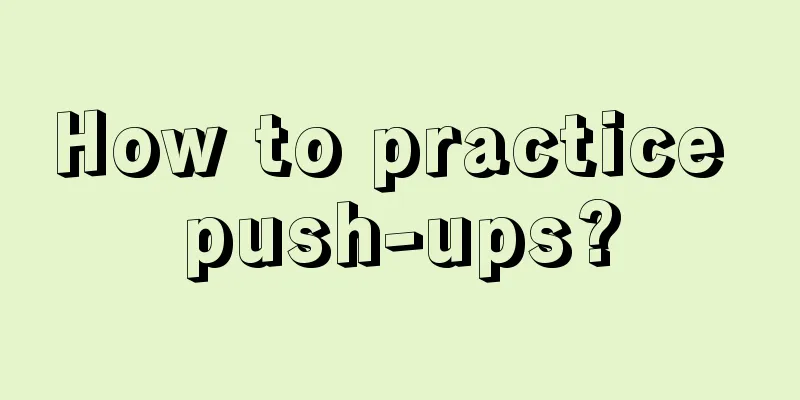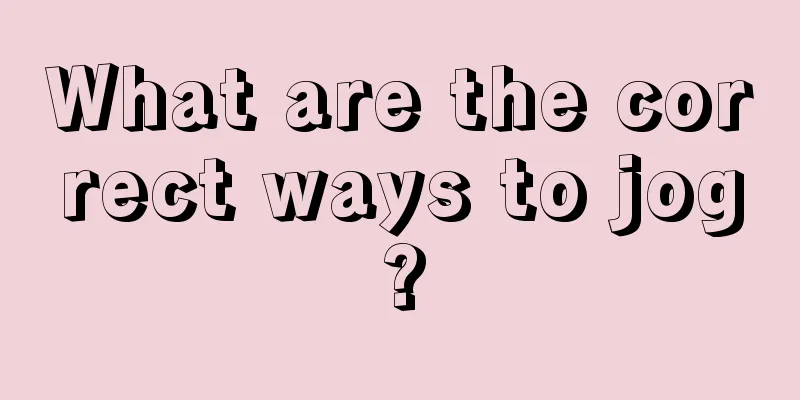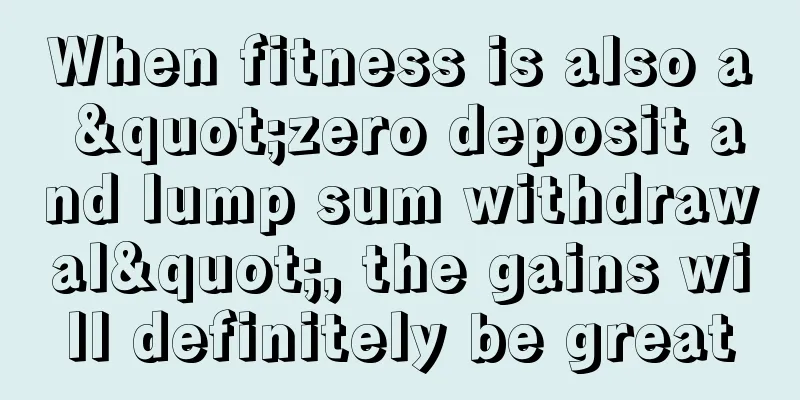How to practice push-ups?

|
Push-ups are a simple form of exercise, which not only have a good effect on the arm strength and abdominal muscles, but also have a good effect on the back and chest muscles. That’s why many men like to exercise by doing push-ups. However, for those who are new to push-ups, how to practice push-ups is an issue that deserves more attention. Let me introduce to you how to practice push-ups! Push-ups are good for exercising the abdominal, back and chest muscles, and can be done in many different ways to achieve unexpected fitness results. Methods/Steps 1. Change the distance between the two hands: the hands are slightly wider (or slightly narrower) than the shoulders, and the elbows are open and parallel to the ground. As long as your hands are not equal to shoulder width, the difficulty of push-ups will increase accordingly. The method that is slightly wider than the shoulder distance focuses more on training the arm and shoulder muscles; the method that is slightly narrower than the shoulder distance focuses more on training the chest and back muscles. 2. Changes in hand and foot techniques: Hand techniques can be divided into three forms: full palm support, fist support and finger support. In terms of direction, they can be divided into three support postures: fingertips forward, inward and outward. Full palm support means supporting the ground with the entire palm; fist support means supporting the ground with a clenched fist; finger support means supporting the ground with the first joint of the fingers. Finger support requires great strength and is the most difficult. There are two types of foot techniques: feet together or apart. You can also use the instep or arch of the foot to support the ground. 3. Changes in posture with body tilt: When doing high push-ups, the practitioner's body is with feet low and hands high, and hands and feet are not on the same horizontal plane. This posture is suitable for beginners and people with little strength. Medium push-ups, in which the practitioner's feet and hands are on the same level, are suitable for general exercisers. When practicing low-post push-ups, the practitioner's body is with feet high and hands low. The feet can be placed on a low stool or the edge of the bed, and the hands can be supported on the ground. The hands and feet are not in the same plane. This posture puts the weight of the whole body on the upper limbs, which requires a high level of physical fitness from the fitness enthusiast. 4. Changes in exercise frequency: You can combine fast and slow exercises, do it a few times quickly and then a few times slowly; you can also count at a fixed time to calculate the number of exercises per unit time; you can also simply count, and the practitioner does push-ups continuously until exhaustion. Changes in frequency can better stimulate muscle growth, and by using them crosswise, you will not feel tired easily during exercise. When practicing push-ups, you should proceed step by step, from easy to difficult. Before doing push-ups, you should fully massage, swing, and stretch your upper limbs to prevent muscle stiffness. During practice, you should find the push-up form that suits you and control the exercise load reasonably. Push-ups are good for exercising the abdominal, back and chest muscles, and can be done in many different ways to achieve unexpected fitness results. 1. Change the distance between the two hands: the hands are slightly wider (or slightly narrower) than the shoulders, and the elbows are open and parallel to the ground. As long as your hands are not equal to shoulder width, the difficulty of push-ups will increase accordingly. The method that is slightly wider than the shoulder distance focuses more on training the arm and shoulder muscles; the method that is slightly narrower than the shoulder distance focuses more on training the chest and back muscles. 2. Changes in hand and foot techniques: Hand techniques can be divided into three forms: full palm support, fist support and finger support. In terms of direction, they can be divided into three support postures: fingertips forward, inward and outward. Full palm support means supporting the ground with the entire palm; fist support means supporting the ground with a clenched fist; finger support means supporting the ground with the first joint of the fingers. Finger support requires great strength and is the most difficult. There are two types of foot techniques: feet together or apart. You can also use the instep or arch of the foot to support the ground. 3. Changes in posture with body tilt: When doing high push-ups, the practitioner's body is with feet low and hands high, and hands and feet are not on the same horizontal plane. This posture is suitable for beginners and people with little strength. Medium push-ups, in which the practitioner's feet and hands are on the same level, are suitable for general exercisers. When practicing low-post push-ups, the practitioner's body is with feet high and hands low. The feet can be placed on a low stool or the edge of the bed, and the hands can be supported on the ground. The hands and feet are not in the same plane. This posture puts the weight of the whole body on the upper limbs, which requires a high level of physical fitness from the fitness enthusiast. 4. Changes in exercise frequency: You can combine fast and slow exercises, do it a few times quickly and then a few times slowly; you can also count at a fixed time to calculate the number of exercises per unit time; you can also simply count, and the practitioner does push-ups continuously until exhaustion. Changes in frequency can better stimulate muscle growth, and by using them crosswise, you will not feel tired easily during exercise. When practicing push-ups, you should proceed step by step, from easy to difficult. Before doing push-ups, you should fully massage, swing, and stretch your upper limbs to prevent muscle stiffness. During practice, you should find the push-up form that suits you and control the exercise load reasonably. There are many ways to practice push-ups. What you need to pay attention to is that you must proceed step by step. It is best to start with the most basic push-ups. As long as you persist, you will get unexpected fitness results. For those who do push-ups on the go, you must not pursue quantity too much. It is best to practice in groups. You should rest after every few groups and don't get too tired. |
<<: Are sit-ups okay after a cesarean section?
>>: Which parts of the body are exercised by push-ups?
Recommend
What are the exercises for the rectus abdominis?
Nowadays, many of my friends like to do fitness a...
What is the purpose of doing yoga?
Yoga is a very healthy exercise for health care a...
How do you breathe while running?
How to breathe while running must be a topic that...
The best exercise for weight loss
How to achieve the best weight loss effect in the...
What is an effective way to slim down your thighs?
In Korean dramas, every male protagonist has long...
Is there any way to lift your buttocks?
Whether male or female, I believe many people wan...
The essentials of boxing sandbag
Life is a process of continuous learning. Before ...
What to eat to build muscle
Muscle building has now become a topic that men o...
What to drink for muscle building
It is very necessary to increase nutrition while ...
What are the key points of running and walking?
Running and walking are things we do every day, b...
What are the most effective ways to slim down your butt?
Some people are troubled by the excess fat on the...
What is the most effective way to build muscle throughout the body?
If you exercise your whole body muscles every day...
How to start practicing yoga
Nowadays, with the gradual increase in the pressu...
How to lose weight through simple exercise?
Do many modern people like to have a slim figure?...
How to relieve body aches after exercise?
Many of our friends usually do physical exercise ...









